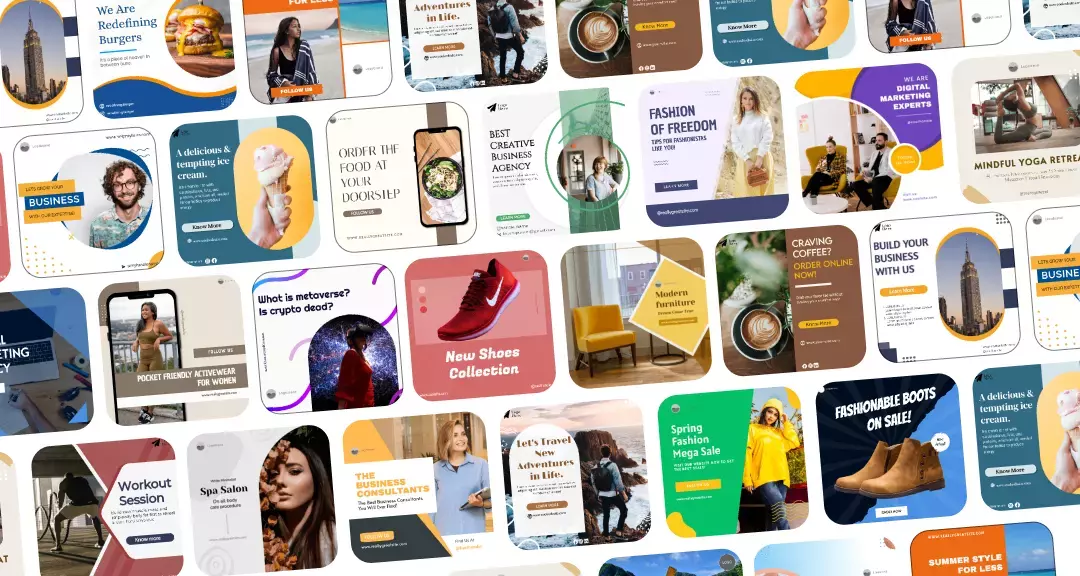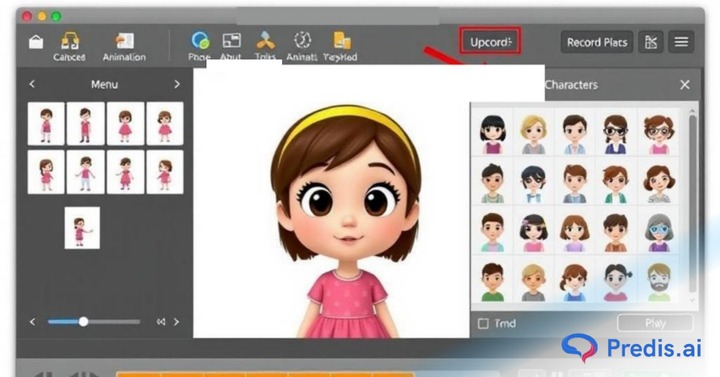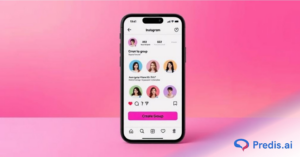Learning animation shouldn’t feel overwhelming. With so many options out there, the hardest part isn’t always creating your first scene; it’s figuring out which animation software to start with. Pick the wrong one, and you’ll spend more time wrestling with menus and technical hurdles than actually animating.
Here’s the thing: the best animation software 2025 isn’t necessarily the flashiest or most expensive. For beginners, the right tool balances three things:
- Intuitive interface – You should be able to find your way around without digging through endless menus. Tools like Vyond are built for this, offering drag-and-drop simplicity.
- Learning resources – Video tutorials, community forums, and beginner-friendly guides make the difference between quitting and growing your skills, whether you’re curious about how to start animation software or troubleshooting a rigging issue, support matters.
- Hardware needs – Some tools run smoothly on everyday laptops, while others demand heavy-duty machines. Knowing this upfront saves frustration (and money).
TL;DR 🖋
Getting started with animation doesn’t have to be complicated. With the right beginner-friendly software, you can create engaging visuals without years of training or expensive equipment. From free animation tools for beginners to advanced platforms with professional features, there’s something for every skill level and budget. Here are the top 10 best animation software programs for beginners in 2025:
- Predis.ai
- Blender
- Adobe Animate
- Adobe After Effects
- Procreate
- Pencil2D
- Synfig Studio
- OpenToonz
- Moho (Anime Studio)
- Houdini
Quick Comparison Table
Want to know which is the best tool that you could choose from? Fret not! Check out the quick comparison tool.
Software | Used For | Platforms | Pricing | Learning Resources | Reviews |
|---|---|---|---|---|---|
| Predis.ai | AI-powered animation & social media visual | Web-based | 7-day free trial, after adding CC | Blog, tutorials, community | 5 ★ |
Blender | Beginner-friendly 3D animation software | Windows, macOS, Linux | Free, open-source | Online community, YouTube | 4 ★ |
Adobe Animate.io | Vector-based 2D animation software easy to use | Windows, macOS | Subscription (Creative Cloud) | Adobe tutorials, forums | 2.5 ★ |
Adobe After Effects | Vector-based 2D animation software easy to use | Windows, macOS | Subscription (Creative Cloud) | Adobe tutorials, forums | 3 ★ |
Houdini | Advanced effects & procedural animation | Windows, macOS, Linux | Free “Apprentice” version, Paid | Strong tutorial library, online courses | 3.5 ★ |
| Procreate | Best animation apps for iPad (hand-drawn) | iPadOS | One-time purchase | YouTube tutorials, Procreate handbook | 3.9 ★ |
| Pencil2D | Free and lightweight frame-by-frame animation | Windows, macOS, Linux | Free, open-source | Active community forum | 4 ★ |
| Synfig Studio | Vector-based animation with interpolation | Windows, macOS, Linux | Free, open-source | Documentation, tutorials | 3.8 ★ |
| OpenToonz | Studio-level free animation tools for beginners | Windows, macOS | Free, open-source | Community support, official site | 4 ★ |
| Opus Moho (Anime Studio) | Rigging and 2D character animation | Windows, macOS | Paid (trial available) | Online courses, forums | 3 ★ |
The Top 10 Best Animation Software for Beginners
Choosing the right animation tool can make the difference between feeling stuck and actually enjoying the process. The good news? You don’t need to be a pro or invest in expensive gear to get started. From AI-powered platforms like Predis.ai to industry staples like Adobe and Blender, today’s options cover every need—whether you want 2D animation software easy to use, beginner-friendly 3D animation software, or even the best animation apps for iPad like Procreate.
Below, we’ve rounded up the top 10 best animation software for beginners in 2025, with a quick look at what each offers and why it might be the perfect fit for your creative journey.
1. Predis.ai
Predis.ai is an AI-powered animation and content creation tool that’s especially handy for beginners who want quick, professional-looking visuals without diving deep into complex software. It’s web-based, intuitive, and built for businesses looking to create short-form animations for social media marketing.

Key Features:
- Cloud-based platform, no heavy installation required
- AI-driven suggestions for animation and design
- Drag-and-drop editing with templates
- Built-in support for social media formats
- Free plan available with upgrade options
2. Blender
Blender is one of the most popular free animation tools for beginners, offering everything from 2D sketches to complex 3D worlds. While it has a learning curve, its active community and endless tutorials make it accessible if you’re committed to learning.

Key Features:
- Free and open-source, no licensing costs
- Supports both 2D and beginner-friendly 3D animation software
- Powerful rendering engine (Eevee and Cycles)
- Active global community with tutorials and forums
- Works on Windows, macOS, and Linux
3. Adobe Animate
Adobe Animate is perfect for creating vector-based animations, interactive content, and web-based projects. It’s widely used in education, web design, and basic game development, making it a go-to for creatives who want scalable animations.

Key Features:
- Vector-based workflow for clean, scalable graphics
- Easy frame-by-frame and tweening options
- Exports to HTML5 Canvas, WebGL, and other formats
- Integration with Creative Cloud apps
- Rich library of learning resources and tutorials
4. Adobe After Effects
When it comes to motion graphics and visual effects, After Effects is the industry standard. Beginners might find it dense at first, but with step-by-step tutorials, it becomes an incredibly powerful tool for video-based animation projects.

Key Features:
- Professional-level motion graphics and compositing
- Huge selection of plugins and presets
- Works seamlessly with Premiere Pro and Photoshop
- Advanced text, logo, and particle animations
- Massive library of tutorials for beginners
5. Procreate
Procreate is a favorite among illustrators and hobbyists who love drawing by hand. With its animation assist feature, it’s one of the best animation apps for iPad, offering smooth workflows for frame-by-frame animation.

Key Features:
- Optimized for iPad + Apple Pencil
- Animation Assist for easy frame control
- Layered timeline for managing drawings
- One-time purchase, no subscription
- Large library of brushes and customization options
6. Pencil2D
Pencil2D is lightweight, open-source, and ideal for anyone just starting with 2D animation software, easy to use. Its simple interface makes it great for practicing frame-by-frame animations without distractions.

Key Features:
- 100% free and open-source
- Cross-platform (Windows, macOS, Linux)
- Raster and vector drawing support
- Minimalist interface for beginners
- Active, supportive online community
7. Synfig Studio
Synfig Studio is another open-source option but it focuses more on vector-based animation. It’s designed to reduce manual effort by using interpolation, making frame-by-frame work smoother for beginners.

Key Features:
- Free, open-source 2D animation software
- Vector tweening reduces manual frame drawing
- Supports bones and cut-out animation
- Compatible with multiple platforms
- Rich online documentation and tutorials
8. OpenToonz
OpenToonz is professional-grade software that’s also free. Famously used by Studio Ghibli, it combines advanced features with accessibility, making it one of the most powerful free animation tools for beginners.

Key Features:
- Free and open-source, backed by professional studios
- Advanced scanning and cleanup tools for hand-drawn work
- Wide range of effects and plugins
- Vector and raster animation support
- Active developer and community updates
9. Moho (Anime Studio)
Moho bridges the gap between beginner-friendly software and professional rigging tools. Its intuitive bone system makes it easy to animate characters without redrawing every frame.

Key Features:
- Affordable compared to other pro tools
- Powerful bone-rigging system for characters
- Smart meshes for smooth animation control
- Timeline-based editing with onion skinning
- Available in both Debut (beginner) and Pro versions
10. Houdini
Houdini is advanced, but even beginners can use its free “Apprentice” version to learn node-based 3D animation and VFX. It’s widely used in film and gaming, making it a great long-term investment for ambitious learners.

Key Features:
- Node-based workflow for ultimate flexibility
- Free “Apprentice” version for learning
- Powerful particle, fluid, and physics simulations
- Ideal for VFX-heavy projects
- Huge online learning library and courses

Tips to Choose Your Match
Finding the best animation software for beginners isn’t just about what looks fancy on a feature list, it’s about what actually fits your style, budget, and device. Here’s how to narrow it down:
1. Decide: 2D vs 3D
Start with the basics. Do you want to create hand-drawn, flat visuals or dive into building full 3D worlds? If you lean toward simple cartoons or explainer videos, stick with 2D animation software easy to use ,like Vyond, Pencil2D, or Procreate. If you’re curious about 3D, try beginner-friendly 3D animation software like Blender or Houdini’s free Apprentice version.
2. Budget: Free vs Paid
There’s no shame in starting free. Tools like Predis.ai ,Blender, Synfig Studio, and OpenToonz are excellent free animation tools for beginners. If you’re willing to invest in extra polish and features, paid software like Adobe Animate or Vyond offers more professional workflows. Think of it as testing the waters before buying a surfboard.
3. Device and Platform Considerations
Not every tool works everywhere. Procreate is iPad-only. Blender and Synfig run smoothly on Windows, macOS, and Linux. Cloud platforms like Predis.ai and Vyond just need a browser. Check what your hardware can actually handle before you download a program that crashes your laptop.
4. Learning Resources
Even the best animation software 2025 won’t help if you can’t figure out how to use it. Look for software with strong communities, active YouTube channels, and official tutorials. Just like maintenance teams use work order software to track and complete tasks efficiently, beginners in animation also need clear steps and organized tools to keep their creative workflow smooth. For example, Blender has one of the largest communities online, while Adobe tools come with in-depth courses. The easier it is to find help, the faster you’ll level up
Wrapping Up
The right animation software can make learning feel exciting instead of frustrating. Choosing wisely means you’ll spend less time wrestling with settings and more time actually bringing your ideas to life. Whether it’s a free tool like Blender or Pencil2D, a business-focused platform like Vyond, or the best animation apps for iPad like Procreate, each option has its own strengths.
But here’s the real secret: there isn’t one perfect answer. The best way to find your match is to experiment. Try a few free animation tools for beginners, play around with 2D animation software easy to use, or dip your toes into beginner-friendly 3D animation software. Every project teaches you something new, and that learning curve is part of the creative journey.
So start small, stay curious, and don’t be afraid to switch tools as your skills grow. The software is just the brush—the real magic is in the story you want to tell.
















